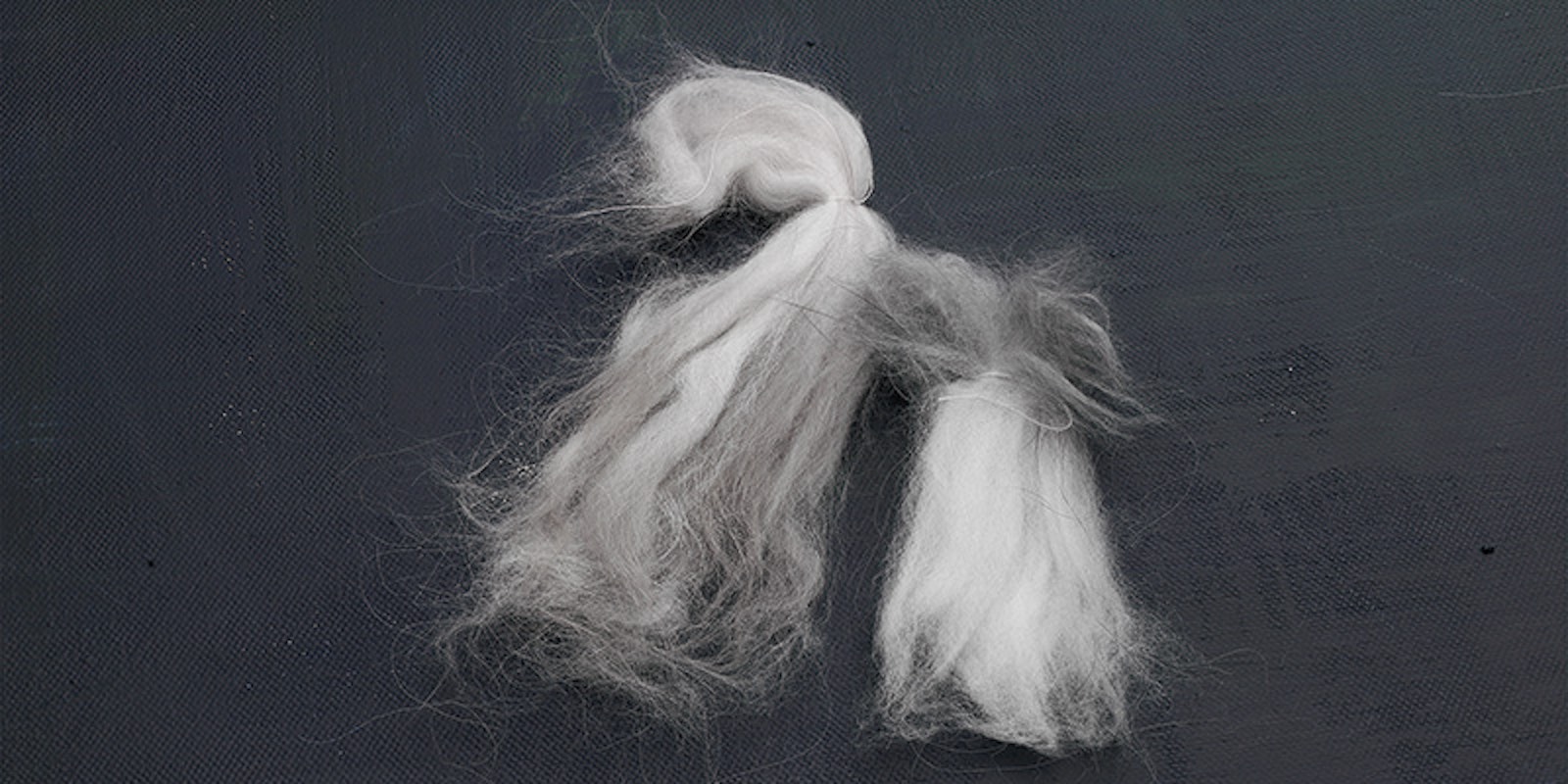A few misconceptions exist outside the rabbit-raising world. My personal pet peeve is hearing that angora is a “short” fiber. Breed standard for coat length is 3 inches; fiber at prime is easily 3 to 4 inches. I would not consider that short, as that is the range of many sheep wools. If the rabbit does not molt regularly, then fibers are much longer. I’ve known English coats to go to 12-plus inches and French to 8 inches.
Guard Hairs
Next, it’s said that English Angoras do not have guard hairs and the other breeds do. In fact, all proper Angora coats have guard hairs. The guard hairs protect the undercoat, protruding above the down to give Angora silhouettes that draping appearance, carry the deepest color on the coat, and produce a halo. The difference in the types of coat is the diameter of the guard hairs, which are very fine on English Angoras and thicker on French. Of course, the amount of guard hair can vary from rabbit to rabbit. Without guard hairs, the coat would be a grooming nightmare and too fine to be useful; too many guard hairs result in a prickly final product.
 This satin Angora from Red Sky Farm has a color pattern called “broken black.” Photo by George Boe
This satin Angora from Red Sky Farm has a color pattern called “broken black.” Photo by George Boe
Crimp and Warmth
I’m sure you’ve heard that angora has no memory. In truth, good fiber has crimp—lots of tiny crimps—and that is part of the equation for memory. However, angora has nowhere near as much crimp as wool and should not be compared to it. This is also something to consider when deciding how to use the resulting yarn.
And yes, angora is a very warm fiber, but warmth is an individual thing. Angora is only too warm if you are too warm. I live at the edge of Lake Erie, where there is no such thing as too warm. A thin layer of angora next to the skin keeps me warmer than several layers of synthetic fiber.
 An English Angora from Moonlight Moonsong. Photo by George Boe
An English Angora from Moonlight Moonsong. Photo by George Boe
Beginners interested in angora are frequently told to start with an “easier” fiber on the spindle, preferably a medium-breed wool. Contrarily, my first completed spindle project was from a Chocolate Angora. Before that, the spindle and I did not get along. I had spun angora on my Louet S17, but I was drawn to the spindle again for portability and because I don’t like to give up. Mostly I fell in love with pairing the spindle and angora because to me it feels like a more intimate spin.
Angora just takes a bit of practice to turn that super-soft bunny fluff into a useful yarn. Now that you know a bit more about angora, don’t be afraid to take it for a little spin. It’s a challenge, but that heavenly soft skein will be worth it.
Learn more about spinning with angora fiber in Denise Williams’s article, “The Fine Points of Spinning Angora,” featured in Spin Off Fall 2016.
Also, remember that if you are an active subscriber to Spin Off magazine, you have unlimited access to previous issues, including Fall 2016. See our help center for the step-by-step process on how to access them.
DENISE WILLIAMS is a former elementary school teacher turned urban farmer. She raises French Angoras and German shepherds at Four Square MicroFarm in Cleveland, Ohio. Denise is an avid spinner, knitter, weaver, and history buff.
Originally published January 29, 2018; updated August 28, 2023.

